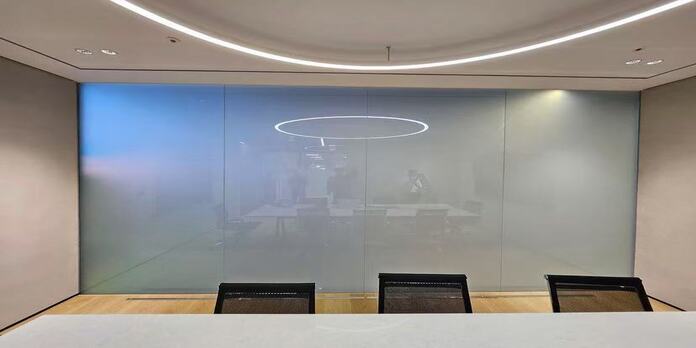Smart glass technologies offer a range of functionalities and are available in several types, each using different mechanisms to achieve switchable transparency and other features.
PDLC (Polymer Dispersed Liquid Crystal)
Mechanism: Uses liquid crystals dispersed in a polymer matrix. An electric current aligns the crystals, making the glass transparent; without current, it becomes opaque.
Applications: Privacy glass for homes, offices, and vehicles.
Features: Quick switching, primarily for privacy.
Electrochromic Glass
Mechanism: Changes color or opacity when voltage is applied, allowing gradual tinting.
Applications: Windows and skylights for energy efficiency and glare reduction.
Features: Controls light and heat, slower transition.
SPD (Suspended Particle Devices)
Mechanism: Contains suspended particles that align with an electric current to allow light through; when off, particles scatter, darkening the glass.
Applications: Automotive sunroofs, architectural facades.
Features: Adjustable tinting for light and heat control.
Thermochromic Glass
Mechanism: Changes transparency in response to temperature changes without electrical input.
Applications: Energy-efficient building facades.
Features: Passive, automatic light control.
Photochromic Glass
Mechanism: Darkens in response to UV light exposure, similar to transition lenses.
Applications: Specialized windows and eyewear.
Features: Automatic response to sunlight, no electrical power needed.
Liquid Crystal Displays (LCD)
Mechanism: Similar to PDLC but used for displays and signage.
Applications: Digital signage, interactive displays.
Features: Can display images and text, requiring power to maintain the display.
Each smart glass technology offers unique advantages and is suited to different applications, depending on the desired functionality, environmental conditions, and design requirements.






